I grew up in a new suburban township in the early 80s. Our household was considered lower income with both parents working full-time. In many ways, I was a city kid with nothing although we were blessed to have all our basic necessities met. It is not surprising then that this environment helped shape my sense of aesthetics and the way I approach life through frugality.
She would save up raffia strings from store purchases and use them to tie up the bamboo leave dumplings she would make yearly.
My primary care giver was my aging immigrant Pohpoh (grandmother). Life for my Pohpoh’s generation was harsh and she was my first role model who showed me how to make do and to find creative solutions for everyday life. Often she would save up scraps of cloth to reuse them to mend clothes or make buttons. She would save up raffia strings from store purchases and use them to tie up the bamboo leave dumplings she would make yearly. I remember one of her personal items as a cloth belt tightened with an old Chinese coin (the ones with the square hole in the centre). This belt would be mended and remade multiple times always with bits of scraps she had saved. Everything would be used to its full potential much like a Buddhist monk with his robe.
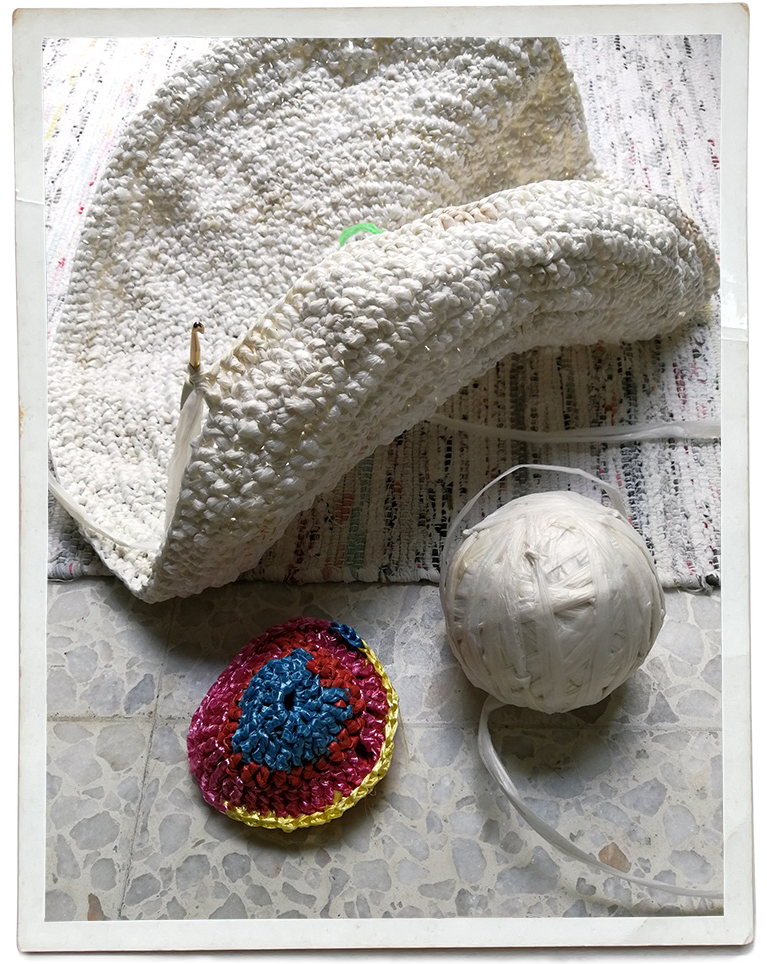
My mother would always regale me with the story of how even as a little girl, I was constantly scouting for things to use, adapting existing bits of pieces around the house to create something else. Having no real toys may have contributed to this. I would dig around my mother’s possessions and design decorative bits of nonsense as a token to my mother when she came home from work. My mother’s most memorable invention that I made at age 2 was a decorated hair curler masquerading as a vase of flowers on her dresser, made by using plastic flowers found on plastic tang longs and fake cherry blossom stalks.
A lot of my drawings were done on the pages of the few books my parents owned, to their dismay.
I remember drawing from a very young age. Because I had no access to paper, much less sketchbook. A lot of my drawings were done on the pages of the few books my parents owned, to their dismay. My favourite canvas at that time was also the white walls of our humble home which allowed me a vast and almost limitless canvas. Later on, I graduated to using unfinished school exercise books as sketchbooks, (Yes, there were lines running over my drawings). I would also design and illustrate outfits in these exercise book pages and make dress-up dolls inspired by the few paperboard paper dolls I owned. They came from bread sellers who rode outside our houses totting their wares. The remaining unused exercise books from each year became hand-drawn fashion catalogues with illustrations of girls in various outfits.
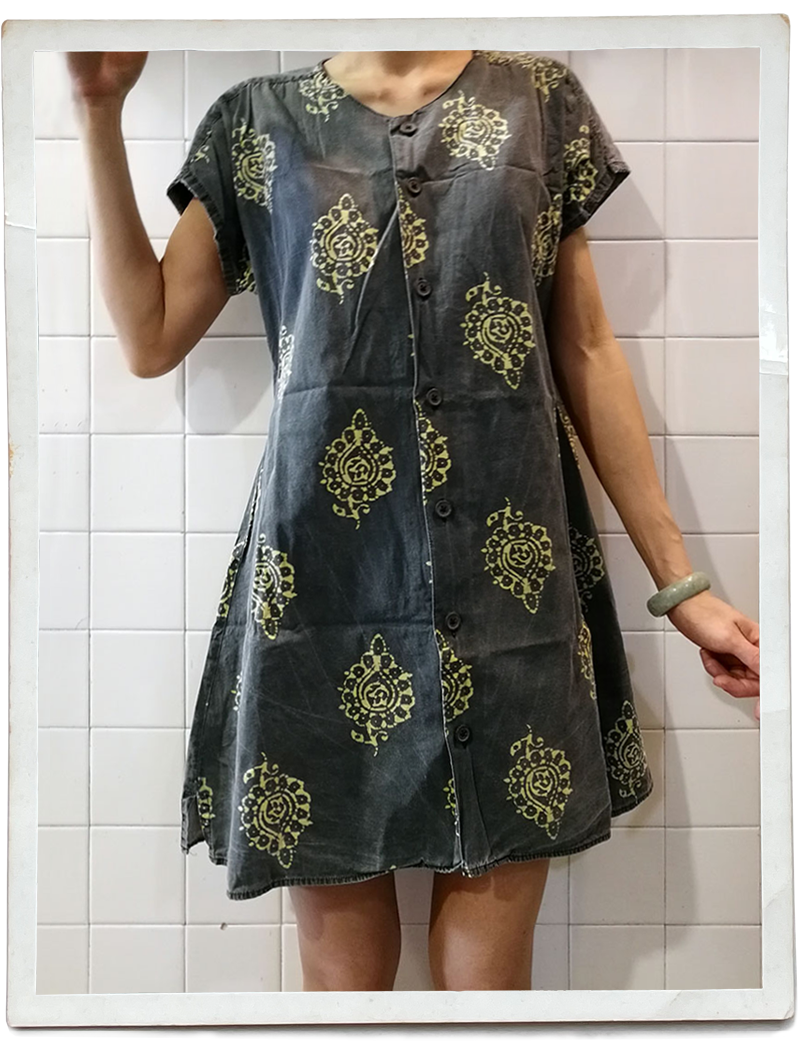
Others, like myself, who grew up in the 80s, would be familiar with the coloured pencil brands of Luna and Colleen. Luna brand colour pencils were school stationery staples that parents had to purchase along with books to equip us for school. In contrast, Colleen brand colour pencils were far superior in texture and colour pigmentation as well as being more than double the price of our humble Luna colour pencils. The limitation of Luna’s 12 colours palette did not stop me from mixing colours to create new hues, creating form by using light and dark shades of one hue and dipping the pigmented tips into water to create that smooth matte finish that was Colleens’ distinction. In this way, I won many colouring competitions and school poster design competitions.
The limitation of Luna’s 12 colours palette did not stop me from mixing colours to create new hues…
I had my first Barbie doll when I was 10 and it was a model that came with a swimsuit and only one party dress. Undeterred, I scoured our household bag of spare material and began to hand sew bits of cloth into clothes for the doll. Initially, they were very badly made and more often than not, they did not fit. Eventually, after all the mistakes I made, the self-made clothes became better. Later I learned how to use a sewing machine and was able to make more complex jumpsuits and dresses for that one single doll. My father was obliviously spared from any whiny requests for more outfits for Barbie. I still have all the clothes made for this doll and they have been passed on to my daughter.
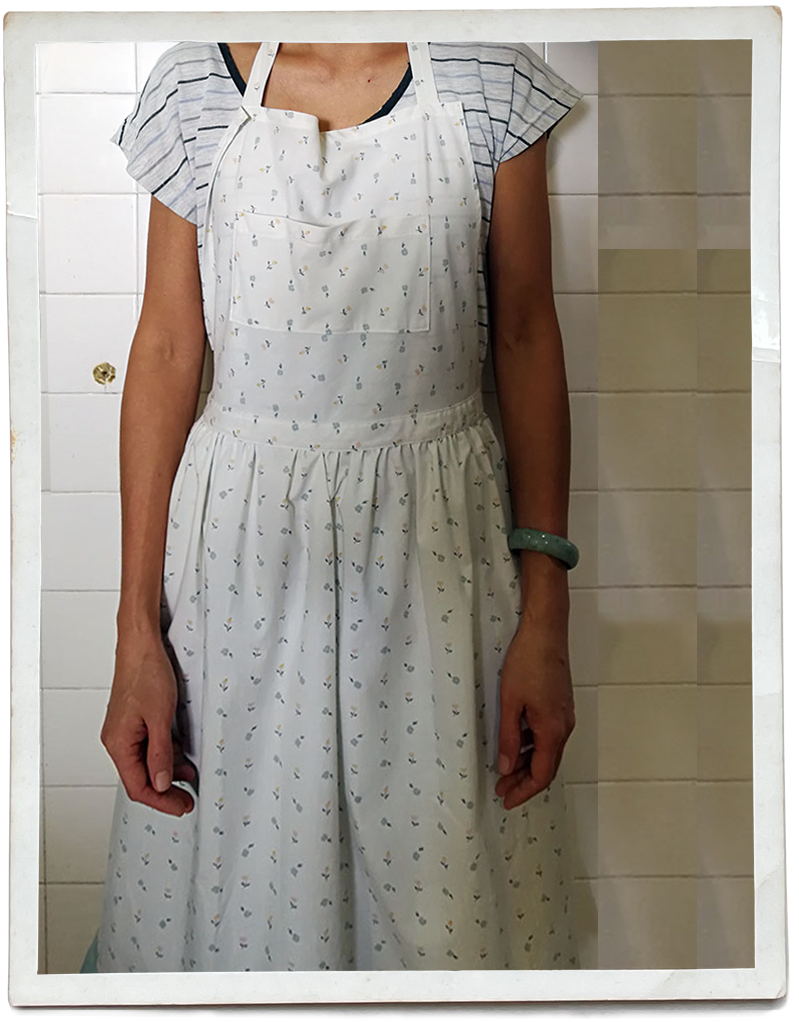
In the post disco era of the 90s, I found punk rock and grunge were emerging so that making our own choices were central to a teenagers’ life. Cutting up magazines and collaging them together to redecorate my pencil case (reused from an old mathematical instrument set) was my way of rebelling and creating something that was uniquely mine and not store-bought (on top of saving on pocket money). When my mother’s old dresser was passed down to me, I redecorated it by improvising on decoupage techniques using cut out comic strips from old newspapers as visuals and elephant glue for a cost-effective pasting and sealing material.
As an art and design student, I was constantly finding ways to save money by being frugal with the art materials and whatever resources I had at hand. I adopted the photostatting machine to manipulate images without having to spend on expensive colour printing artworks. This resulted in a limitation of a colour palette but allowed for the controlled use of colour to create interest. I constantly saved up unused art materials and incorporated them into other projects, re-hatching them in different forms to solve the design problems given to us. One project saw ourselves setting up a physical stall at a local mall to sell our design wares to raise money. The raw material we used was exclusively recycled from unwanted items and made into jeans bags, hand-bound books, keepsake boxes, and the like with little to no additional cost.
I constantly saved up unused art materials and incorporated them into other projects, re-hatching them in different forms to solve the design problems given to us.
Since my late teens, I have been recycling old clothes to become part of my wardrobe. Most items of clothing, I inherited from my mother and late mother-in-law but some is second-hand clothing from bundle store visits. Some pieces of clothing I would alter with the knowledge I had from sewing dolls’ clothes. I have repurposed and made many versatile pieces of clothing from my husband’s old shirts that I wear proudly. I wear them with so much pride since they are unique and reflect my philosophy of frugality. At one point, vintage fashion became trendy and it was heartening to find similar-minded individuals who shared my love for reusing and repurposing fashion. And the recent trend of the fashion industry to move toward sustainability is positive direction.
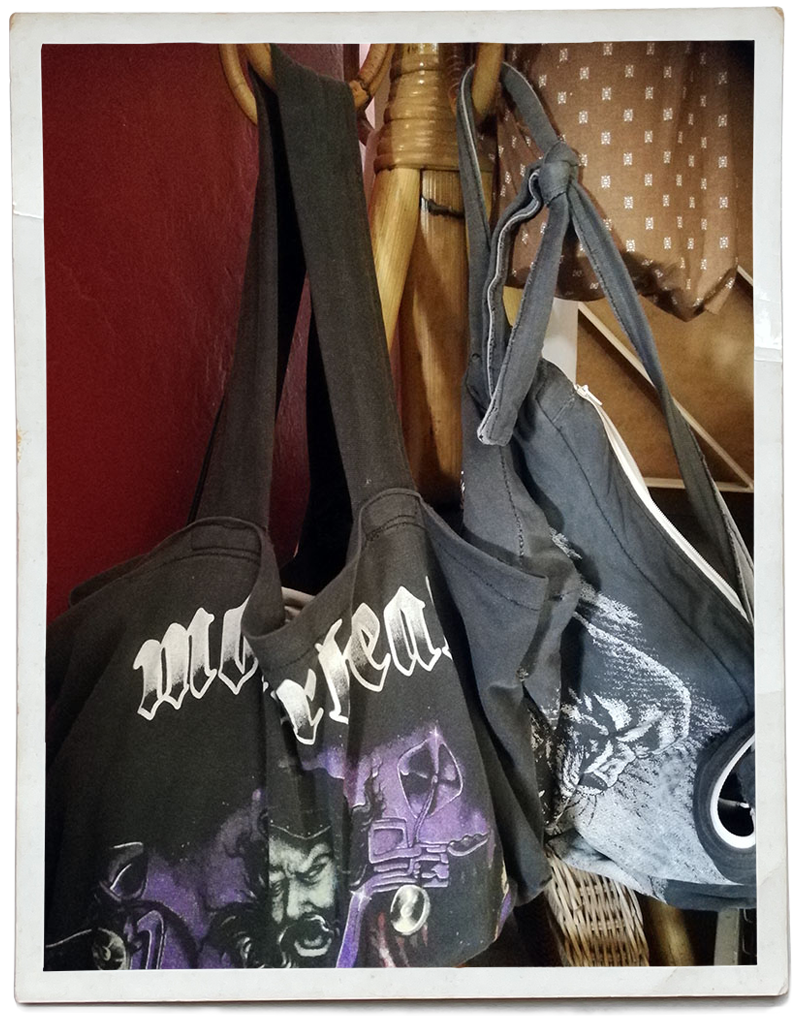
I was privileged to have had the experience and opportunity to live and work with like-minded people when my children were little. We actively participated in communal living with a group of our friends in rural Langkawi where recycled empty bottles were used to make a wall for the communal bathrooms; driftwood and wooden pallets were made into furniture and countertops; bamboo was used to develop livable two-person huts as well as repurposing an abandoned airplane portable passenger stair to help construct a staircase to the upper floors of our friends’ business premise on Pantai Cenang. Making use of whatever scarce resources we could find was a challenge but resulted in many creative solutions with practical functions.
From our habits of frugality, we think deeply about consumption and whether or not we really need to purchase something or to just reuse something in another form.
Now I recycle t-shirts to make reusable shopping bags. I keep old clothes to reuse to create clothing for my family, develop patchwork for mending, and even to make chair cushions. From our habits of frugality, we think deeply about consumption and whether or not we really need to purchase something or to just reuse something in another form. Just the other day, instead of throwing out a worn out shoe cabinet, which was recycled from a showroom display case, it was turned into a planter box instead. I am deeply consoled that I have met and found so many people like myself who share this ideology of frugality. Of course, some people would call this behaviour being stingy. I prefer to think of it as creativity over consumption.
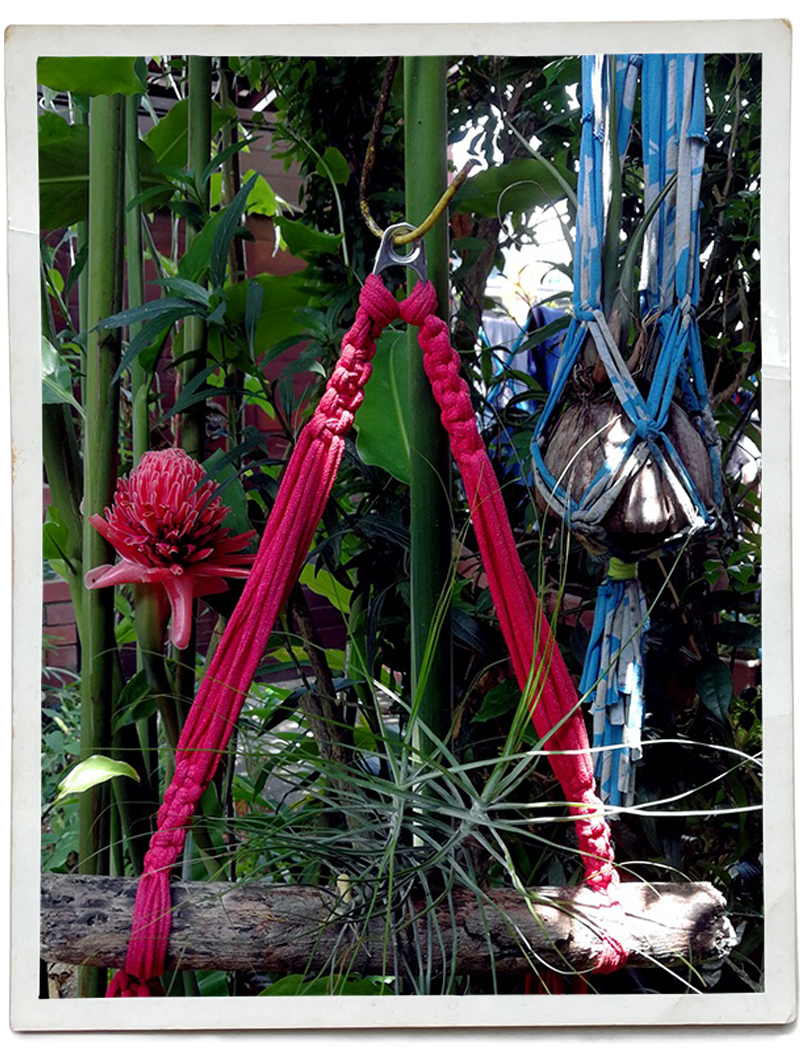
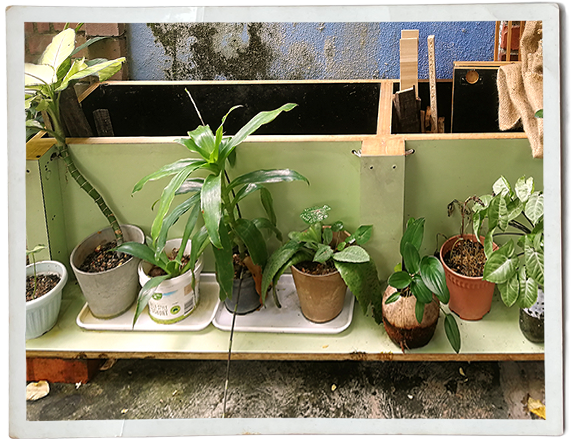
As the world we live in becomes increasingly consumed by mass consumption, we suffer from the consequences. It becomes increasingly crucial to examine the way we live. The concept of frugality is even more relevant today in face of all our global issues and the concept of sustainability. Rapid advancement of development is constantly pushing us to replace existing modes of living that is leading to abandoning existing technology for newer ones driven by lower prices, and more choices sometimes with reduction in quality but ultimately leading to more waste. The current ease in which we invent a solution is hampering creativity. By taking the problem away and inventing exactly what would solve it we deny ourselves the struggle to think out of the box and retain what can be retained.
There are some things we are unable to make or reuse and so we do consume. This essay hopes to inspire a change in mind set and approach to consuming, a lessening of wants, and maybe an effort to make positive changes that would benefit all through developing a conscious consideration to not throw out but to repurpose, to reuse, to pass on what we consumed that had once served us.
Let us challenge our creativity through frugality.

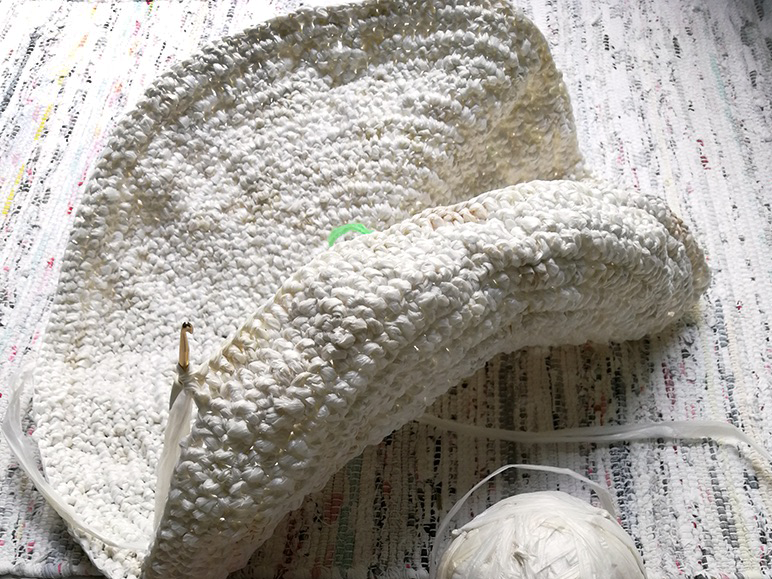
Hi! Read your blog, found an instant reflection of self in you. My mother is your friend in Malaysia, she sometimes meets you, while buying vegetables.